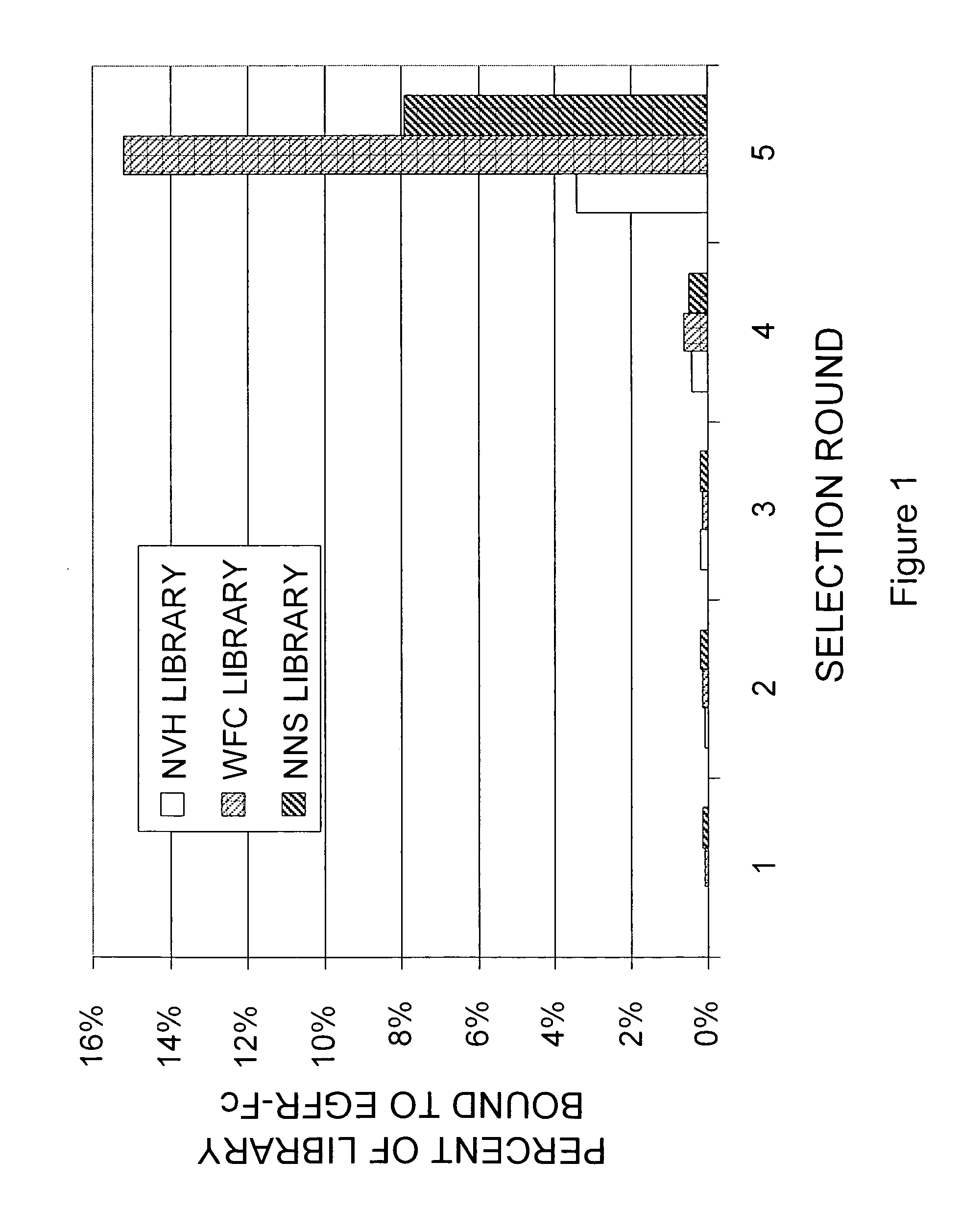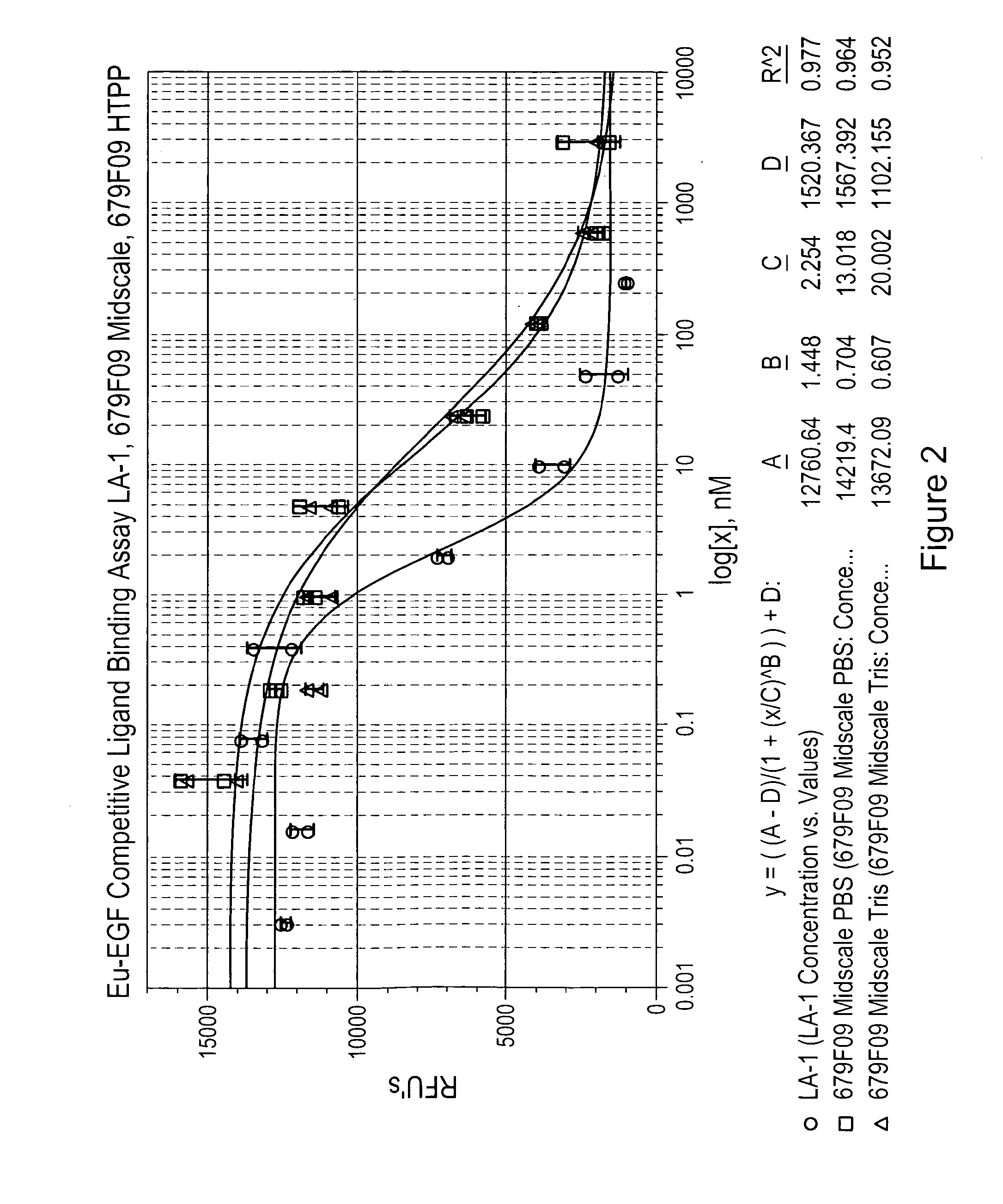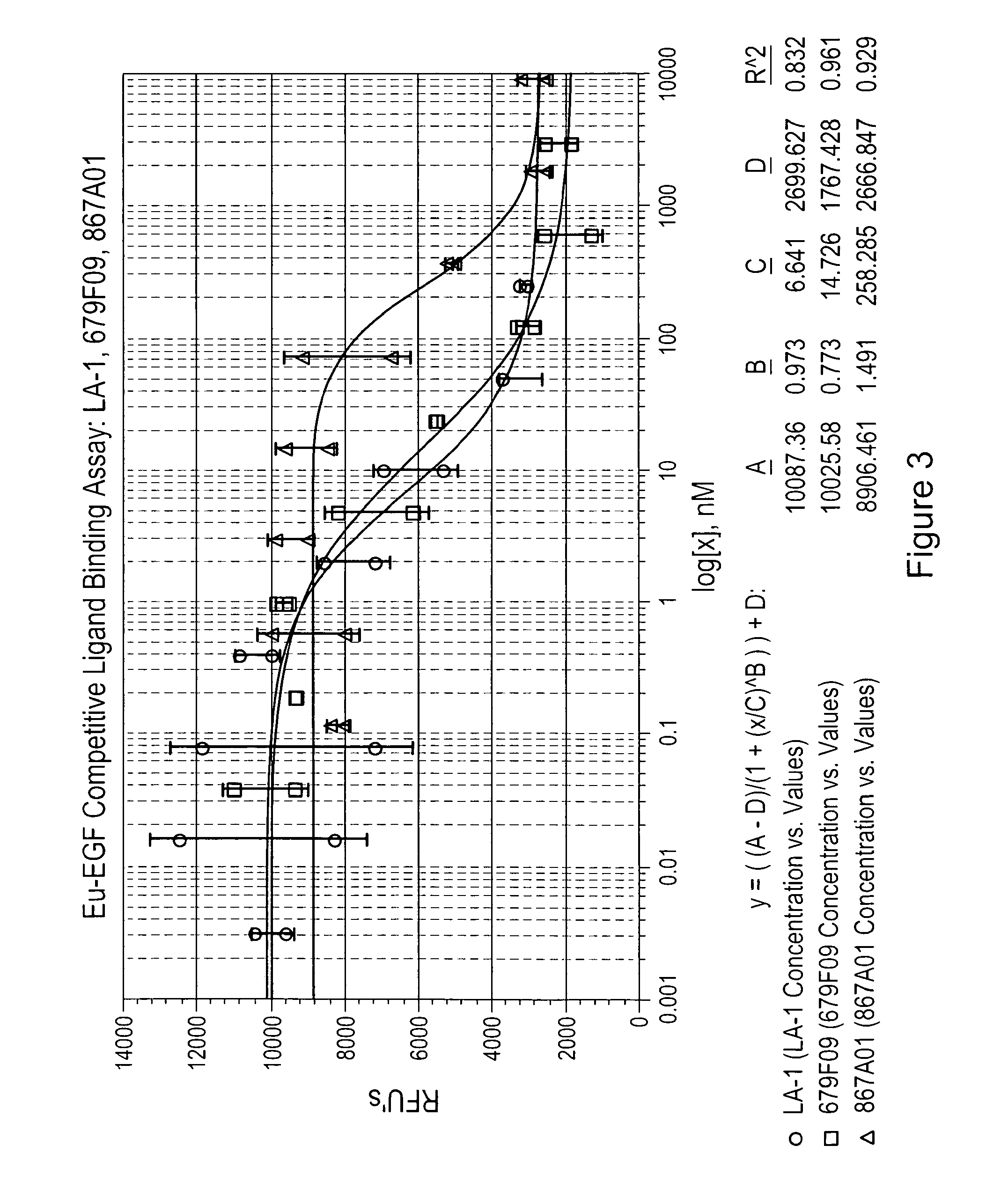Targeted therapeutics based on engineered proteins that bind EGFR
a technology of engineered proteins and therapeutics, applied in the field of single domain proteins, can solve the problems of patient predisposition, and achieve the effect of improving one or more pharmacokinetic properties of polypeptides and increasing the serum half-life of egfr binding polypeptides
- Summary
- Abstract
- Description
- Claims
- Application Information
AI Technical Summary
Benefits of technology
Problems solved by technology
Method used
Image
Examples
example 1
Initial Identification of EGFR Binding Molecules
[0217]A library of approximately 1013 RNA-protein fusion variants was constructed based on the scaffold of the tenth type 3 domain of human fibronectin with three randomized regions at positions 23-29, 52-55 and 77-86, amino acid numbering according to SEQ ID NO: 1 (the “NNS” library) (Xu et al, Chemistry & Biology 9:933-942, 2002). Similar libraries were constructed in which mixtures of phosphoramidite trimers were used instead of degenerate codons to give randomized regions lacking tryptophan, phenylalanine and cysteine (the “—WFC” library), or lacking tryptophan, phenylalanine, cysteine, leucine, isoleucine, methionine and valine (the “NVH” library). After conversion to mRNA / cDNA heteroduplexes, libraries of a trillion or more mRNA / cDNA-protein fusions each were incubated with 100 nM EGFR-Fc in solution, and existing complexes were captured on protein G-coated magnetic beads. The cDNA was eluted by treatment with high pH, amplified ...
example 2
Identification of EGFR Binding Clones
[0218]Proteins encoded by independent clones were analyzed for binding to the full length ectodomain of EGFR as well as a truncated version containing the first 525 amino acids (EGFR 525) of the EGFR ectodomain in single point direct binding assays. Anti-His antibodies were used to capture protein clones in an oriented fashion followed by incubation with full length EGFR or EGFR 525 Fc fusion proteins. Bound receptor-Fcs were detected via anti-human Fc HRP conjugate with a chromogenic readout (i.e. A450). Representative results (partial) from the screening are presented in Table 1 where the relative binding strengths of 24 clones to full length and truncated EGFRs are shown. Compared to the control (SGE), all clones demonstrate significant EGFR binding. The SGE control is the 10FN3 domain as shown in SEQ ID NO: 1 with the integrin binding domain (RGD) substituted with amino acids SGE.
TABLE 1EGFR-FL-FcEGFR 525-FcCloneA450A450SEQ ID NO:SGE0.14340.1...
example 3
Cell-Based Competitive Ligand Binding Assay
[0219]The Cell-Based Competitive Ligand Binding Assay measures the ability of a test sample to bind to EGFR on the surface of human A431 cells and compete with the binding of the natural EGF ligand labeled with a europium tag (Eu-EGF). Competition of the test sample with Eu-EGF for binding to the EGFR's on the cell surface is measured by a decrease in fluorescent signal. Competitive binding of an anti-EGFR antibody (LA-1) is compared to the binding of two EGFR binding clones (679F03, 679F09 and 867A01) in FIGS. 2-4.
PUM
| Property | Measurement | Unit |
|---|---|---|
| solubility | aaaaa | aaaaa |
| solubility | aaaaa | aaaaa |
| molecular mass | aaaaa | aaaaa |
Abstract
Description
Claims
Application Information
 Login to View More
Login to View More - R&D
- Intellectual Property
- Life Sciences
- Materials
- Tech Scout
- Unparalleled Data Quality
- Higher Quality Content
- 60% Fewer Hallucinations
Browse by: Latest US Patents, China's latest patents, Technical Efficacy Thesaurus, Application Domain, Technology Topic, Popular Technical Reports.
© 2025 PatSnap. All rights reserved.Legal|Privacy policy|Modern Slavery Act Transparency Statement|Sitemap|About US| Contact US: help@patsnap.com



